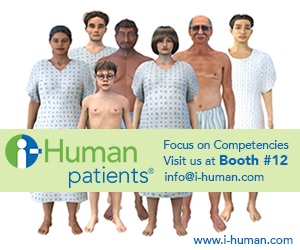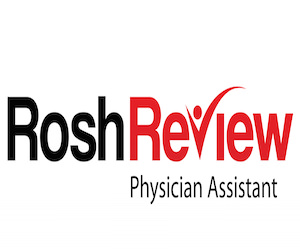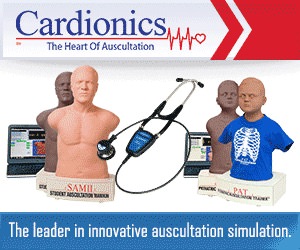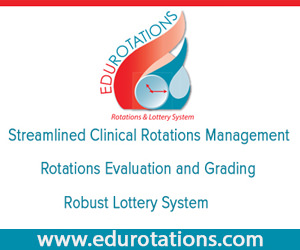Board Candidates
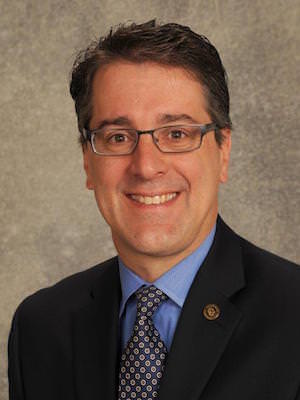
Jonathan Bowser, MS, PA-C
President Elect Platform Statement
I respectfully declare my candidacy for President Elect on the PAEA Board of Directors. I subscribe passionately to the PAEA mission and would be honored to serve the Association in this role.
I have been actively involved with PAEA since entering PA education 10 years ago. My leadership experience at the institutional and national level, and my service to PAEA as a volunteer has provided me with a strong foundation for continued contribution to the Association and the profession. I have felt honored to participate in councils, committees, task forces, work groups and as a Director at Large on the Board of Directors for the past three years.
PAEA is at a critical time of change, facing unprecedented increases in the number of member programs and a rapidly changing healthcare landscape. In my three years of service on the PAEA Board, I have been proud to help the Association advance successfully in this dynamic environment. In response to the challenges of rapid growth, PAEA has expanded offerings for faculty and leadership development, prioritized research funding, and leveraged resources to address the critical issue of clinical site availability. Additionally, efforts have been bolstered to increase diversity in the profession and expand advocacy initiatives on behalf of PAs, PA educators, and future PAs. PAEA has responded to the challenges and opportunities of growth in the profession by focusing on the critical relationships among the four PA organizations in addition to fostering partnerships with non- PA peer organizations, such as the AAMC.
I strive to be an active and collaborative member of the Board, continuing my involvement in task forces and work groups, while embracing opportunities to engage member programs and volunteers. I am collaborative and hardworking by nature and bring a strategic mindset to everything I do. I believe that my commitment to the needs of PAEA and its members has been clearly demonstrated by the quality of my work for the Board and the Association. This is an exciting time of growth in our profession and within our association. I am very proud of the accomplishments of PAEA and would consider it an honor and privilege to continue my service to the Association and its member programs and faculty. I hope you will consider allowing me to serve as President Elect on the PAEA Board of Directors.
Responses to Association Questions
- What characterizes a high-performing Board member and which of those attributes do you posses that would provide strong contributions to the PAEA board?
I think what characterizes a high-performing board member could be referred to as the “Three Cs.” To be effective, a board member should be:- Creative: PAEA strives to be on the leading edge of innovation. This requires a board with a creative mindset and a comfort with outside-of-the-box thinking. A 12-member board comprised of individuals who think creatively, each member bringing their unique perspective to the boardroom, ensures that the Association will engage opportunities and face challenges thoughtfully and with an eye to the future.
- Collaborative: Of course, a group of highly motivated and creative individuals does not become a high-functioning board simply by being in the same room together. Each member must be collaborative by nature, willing to acknowledge the strengths of others and to value the notion of a whole greater than the sum of its parts.
- Conscientious: The PAEA Board of Directors is entrusted with stewardship of the Association. Thus, it is the responsibility of each member of the board to always act with the best interests of the Association in mind. Board members must act with honesty and integrity, maintaining objectivity and exercising reasonable care in carrying out the charge of the board.
In my three years of service as a Director at Large, in my ten years of volunteer service to the Association, and in my work as the program director of a highly regarded and innovative PA program, I believe that I have demonstrated that I possess all three of these important attributes.
- If PAEA’s entire budget was represented by $100, what amount of money would you invest in products & services that benefit individual programs (e.g., exams, workshops), and what amount would you invest in initiatives that benefit the field as a whole (e.g., advocacy, legislation)? Please provide rationale for your response.
I would first acknowledge that the products and services that benefit programs also benefit the field as a whole. Conversely, advocacy and other national and state level initiatives benefit individual programs in very significant ways. With that said, I would dedicate $70 dollars to products and services and $30 to advocacy and legislative initiatives. At present, we are in a period of significant expansion and the needs of programs and faculty are tremendous. Many faculty are entering the profession with little or no formal experience in medical education, and many programs are challenged to provide adequate professional development opportunities for novice faculty. PAEA recently redesigned its volunteer structures to mirror and better serve the increasingly complex needs of member programs and faculty. Through increased Pando offerings, an expanded range of testing products, an array of new councils and committees serving PA educators, an excellent journal dedicated to PA education, an engaging national conference, and other products, PAEA continues to augment and improve its portfolio of offerings for faculty and programs. At present, I think this growth should continue.
I believe that advocacy and legislative initiatives are very important to the growth and development of the profession. Dedicating 30 percent of resources to these efforts seems appropriate and an acknowledgement that, while products and services are essential to our members, we must continue to invest in the work that the Association does to advocate for programs, faculty, students, and patients.
- What are some of the most important unanswered questions relating to the clinical rotation site shortage that the Board needs to address?
One very important question that needs to be answered is, “What are the actual barriers to obtaining and maintaining sufficient clinical sites for PA programs?” While there are many perceived barriers, such as competition from other PA programs, competition from non-PA health professions programs, unrestrained expansion of medical training programs, and increased expectations for payment for clinical sites, we have not been able to sort out what barriers exist and their relative impact on our member programs. In 2013, PAEA collaborated with MD, DO, and nursing education associations to generate the report, “Recruiting and Maintaining US Clinical Training Sites.” While this investigation provided some important baseline information, an expanded and robust investigation of this issue is urgently needed.
Another important set of questions that need to be answered relates to the cost/benefit balance of PA programs collaborating to solve site availability issues and, by extension, the cost versus benefit of PA programs collaborating with non-PA health professions programs. While there has been much discussion about using collaborative approaches to solve this problem, we don’t yet have any evidence to inform this discussion.
A very broad set of questions that would be important to consider concerns how we might leverage accreditation and/or maintenance of certification to contribute to solving this problem. Additionally, how do our state and national-level advocacy efforts intersect with the problem of clinical site shortages? Potential answers to these questions will guide PAEA in its strategic partnerships with PA organizations, non-PA peer organizations and government entities.
- What are the three most important emerging trends in health care and health care education that will affect PA education in the coming decade?
The most important emerging trend in health care delivery is the integration of the tenets of the Triple Aim into a rapidly changing system of delivery. Our learners are entering a system that is quickly eliminating vestiges of the fee-for-service approach and is focused on value-based care. Quality improvement, patient safety, cost-containment and population health were at best theoretical constructs when I was in PA school. If we are to adequately prepare learners for the new face of medicine, PA educators must be adaptable and well-versed in the new models of health care delivery.
One important trend, specific to education, is the problem of the increasing cost of higher education and the burden of student debt. As public institutions see dwindling financial support from state budgets and more private institutions offer PA programs, the cost of attending PA school will continue to be transferred directly to the learner. This shift will create challenges in placing PAs in medically underserved settings and practice environments where salaries are below national median levels.
Another important trend in medical education is the continuing transition to competency-based models of learning and assessment. Medical education is in a period of tremendous change, upending over a century of orthodoxy in favor of an evidence-based approach to education that is learner-centered and integrates our expanding understanding of how adults learn best. This is an area where PA programs and PAEA can and should be on the leading edge of innovation.
- What questions should the Board consider before proposing an initiative to the membership that may be unpopular, but which the Board believes is in the best interest of PA education as a whole?
To start with, it is important that the board has had an exhaustive discussion of the topic, weighing pros and cons, and considering multiple alternatives to the proposed initiative. We should also ask ourselves if the initiative we are proposing has precedent or evidence to support it. As a board, we would also want to gather input from our members and other associated stakeholders to fully understand their perspectives. Integrating the feedback of these individuals whenever possible best enables us to consider the broad view we have as a board, while being mindful of the real concerns of those wrestling with the issues in their daily professional lives.
We should ask ourselves if we have a plan in place to effectively communicate our rationale for the new initiative, including supporting research or other evidence we used to arrive at the decision and stressing the alignment of the initiative with PAEA mission and goals. This is especially vital if the initiative may be unpopular. Clear communication outlining the initiative at hand and evidence to support it may help prevent unneeded frustration and confusion on behalf of members.
Lastly, we should question our willingness and ability to modify our goals and objectives after the initiative has been launched. It is critically important to consider this before committing to a potentially contentious plan. What are the outcomes that would make us reconsider the initiative after launch and do we have an exit strategy?



